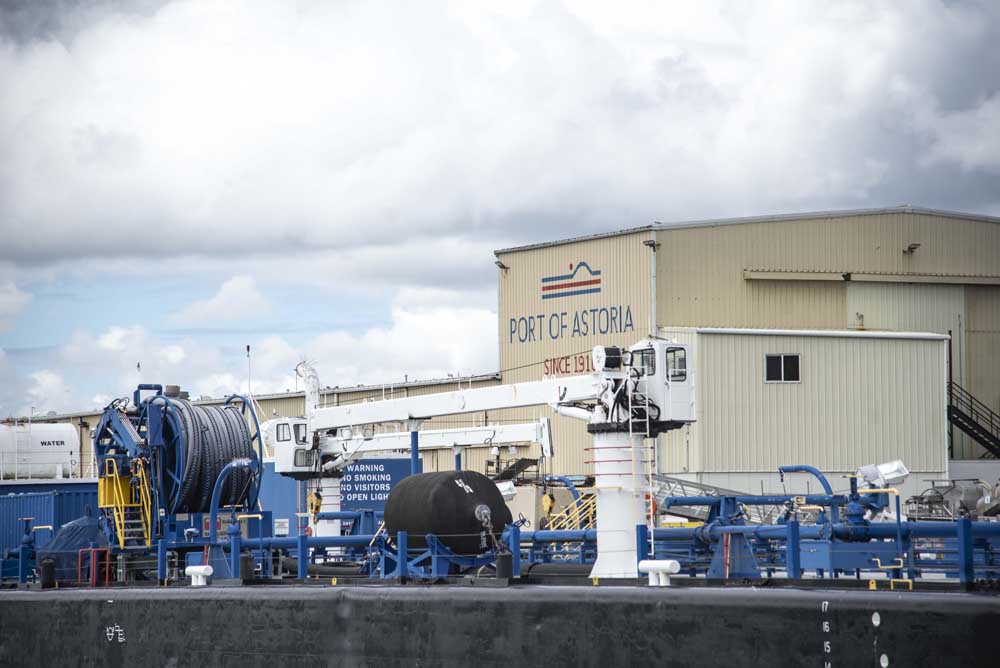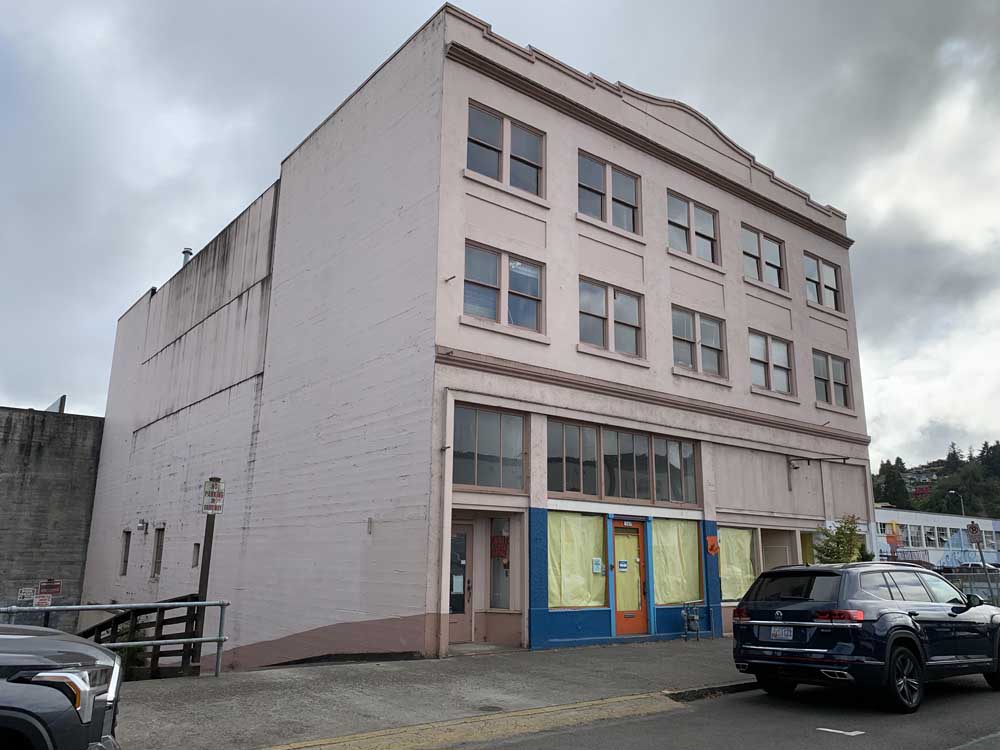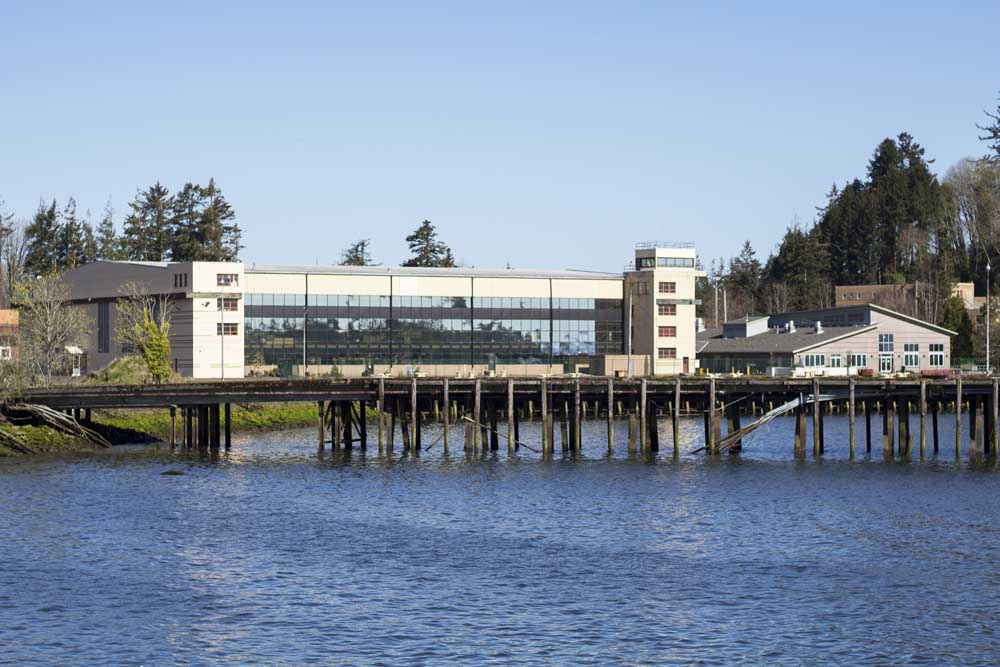Discovery awakens Chinook heritage
Published 4:00 pm Thursday, February 3, 2005
Chinookville, Station Camp, McGowan are site’s names, but the tribe cherishes Quat-sam-ts as most importantThe people called it Quat-sam-ts. From this village on the north shore of the great river Wimahl, the inhabitants harvested the water’s bounty and carried on trade that connected them to tribes up and down the West Coast and far inland.
It was the most prominent settlement of a tribe that was among the wealthiest in the Northwest. But today its only remnants are some charred boards, rocks and pieces of pottery uncovered by archeologists’ trowels.
Quat-sam-ts disappeared long ago, but the discovery two weeks ago of what appears to be a section of a native plank structure has put the long-lost Chinook Indian settlement back in the spotlight.
“It takes your breath away,” Chinook Tribe member Charlie Funk said recently as he watched the excavation. Funk, from Chehalis, Wash., has served as a monitor for the tribe at the Station Camp site.
The finding has temporarily put the brakes on the proposed re-alignment of a half-mile stretch of U.S. Highway 101 while officials from various agencies and the Chinook Indian Nation ponder the significance of the relics and what impact the find will have on the project.
In limboThe story of Quat-sam-ts and the Chinook was to be a featured part of the new public park planned for the riverfront property where the highway currently lies. The park, near the location of the famous Lewis and Clark Station Camp site about two miles west of the Astoria Bridge, is also in limbo until the future of the highway project is decided.
Over its history the site has been known as Station Camp, Chinookville and McGowan, but to today’s Chinook Tribe members, the story of their ancestors’ former home of Quat-sam-ts is the most important.
According to Chinook Tribal Council Chairman Gary Johnson, the village was likely the largest of the many settlements used by the lower band of the Chinook, whose territory stretched from the mouth of the Columbia to Gray’s Bay and north to Willapa Bay.
Lewis and Clark reported counting 36 plankhouses at the site when they arrived in 1805. At the site of another Chinookan village uncovered near Ridgefield, Wash., researchers found a 14-house site that they believe held 900 people – a settlement of 36 houses, assuming roughly the same number of people per dwelling, could have had well over 2,000 inhabitants.
The flat terrace on the shore of the river below the forested hillsides provided the tribe a prime location to harvest the huge salmon runs, which they collected in large seine nets that they placed with canoes. The tribe also fished for sturgeon and smelt, hunted for sea mammals and collected shellfish.
The village’s location also made the Chinook the first Native Americans to greet Capt. Robert Gray when he became the first explorer to enter the Columbia River in 1792. American and European traders soon became regular callers to the mouth of the river, where they bartered with the Chinook for furs in exchange for metal, cloth, beads and pottery, items that eventually made their way inland over the vast Native American trading network.
The village, large as it was, was only a seasonal settlement, used by the inhabitants during the spring and summer salmon runs, after which they moved to winter encampments further inland. That’s where they were when Lewis and Clark arrived at the site in November 1805 and found the village deserted, although tribal members did trade with the expedition during its winter stay.
Tough historyThe story of the Chinook after the arrival of white settlers echoes the experience of other tribes across the West. Devastated by disease and displaced from their traditional lands, they existed mostly in the margins of white society, sometimes getting work in the lumber mills and canneries that sprang up around the area.
A Catholic mission was established near the village in 1848. In the 1850s, Irish immigrant Patrick McGowan set up a salmon-packing plant on land purchased from the mission. A small townsite, gone now, eventually grew up around the plant.
In 1850, an audacious land speculator named Washington Hall took up residence in the village, which was then known as “Chinookville,” and began parceling off lots that he sold to white settlers. When the Chinook met federal Indian agent Anson Dart to negotiate what became known as the Tansy Point Treaty of 1851, they specifically demanded that Hall be evicted as a condition of their signing.
The Tansy Point Treaty called for the Chinook-speaking people to give up their lands on the Columbia River and move to a reservation to be created on Willapa Bay. Though the treaty was never ratified by Congress, many tribal families packed up and moved to the reservation site near Bay Center, further reducing the Chinook presence on the Columbia.
“That’s why most of our families have Bay Center and Willapa Bay connections to this day,” said Johnson, who was born and raised in nearby South Bend.
Eventually the remaining village was burned to the ground while the tribal members were away at their winter quarters, Johnson said. The charred planks uncovered last month could conceivably be from one of the houses destroyed in that fire, he said.
It was tragic decline for a people with such a rich heritage, Johnson said.
“The time came when the few Chinook who were remaining had to go to the McGowan cannery and get fishheads for food,” he said. “From what they had had just a short time before, it was a tough situation to be forced into.”
Delaying constructionThe Washington State Department of Transportation has already announced that the highway project, which was originally set to begin last week, likely will be postponed at least until June. That will push back the construction of the Station Camp park, originally targeted for completion in time for the November Lewis and Clark Bicentennial, to 2006.
The tribe hasn’t taken an official position on the future of the highway and park projects, Johnson said. The tribal council is scheduled to hear updates on the findings from the archeological work from representatives of the state highway department and Washington State Historical Society, which is pursuing the Station Camp park, at its Feb. 12 meeting.
Steven Dow Beckham, a history professor at Lewis and Clark College who has researched the Chinook, said the tribe would likely have no legal standing to block the projects if it decided to oppose them, because it is not federally recognized. The tribe has successfully gone to court in the past to defend its interests, however, once suing a couple for looting native gravesites, he said.
But nobody is talking about such measures at this point, Johnson said. The historical society, WSDOT and the National Park Service have all kept the tribe fully involved in the process, regardless of its lack of federal recognition.
“We feel we have been a partner all along,” he said.
Funk hoped that the finding, by showing the Chinooks’ presence on the river, could help the tribe in its struggle to gain federal recognition, which was granted in early 2001 only to be revoked a year later.
“Obviously we were here then, and we are here now, and there has been nothing in between then that I know of,” he said.





